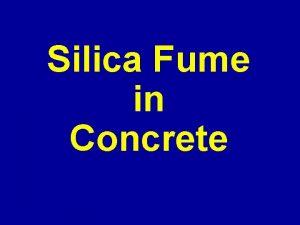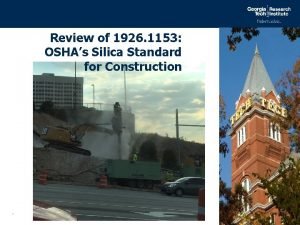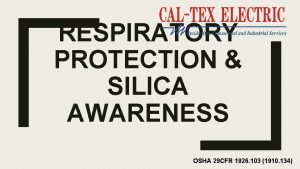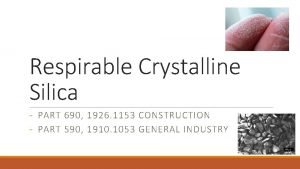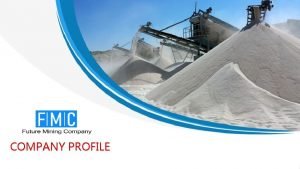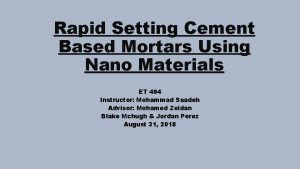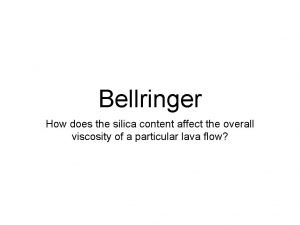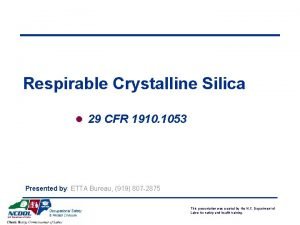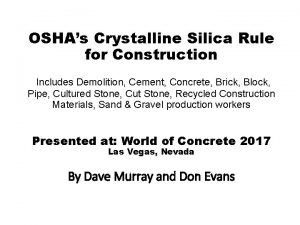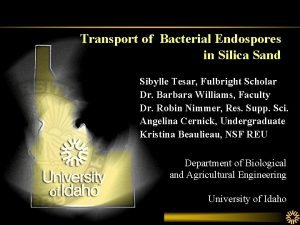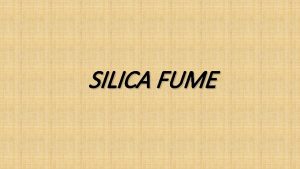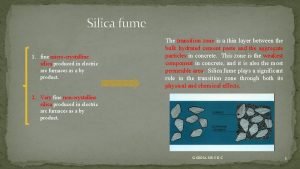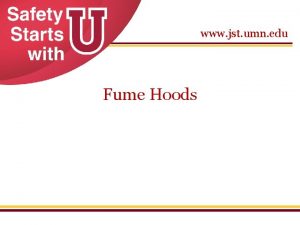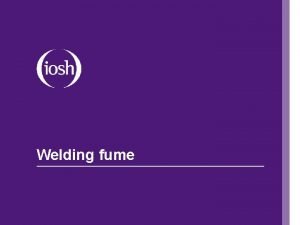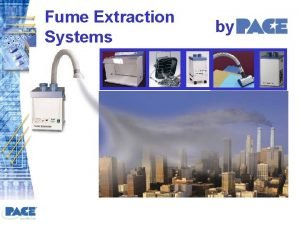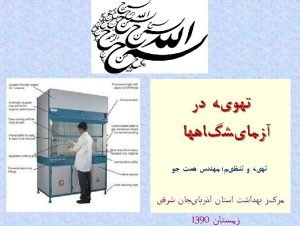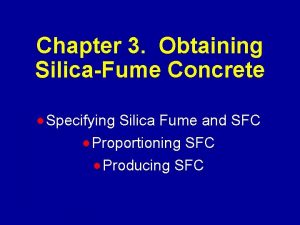THE EFFECT OF SILICA FUME ON THE PROPERTIES











- Slides: 11

THE EFFECT OF SILICA FUME ON THE PROPERTIES OF CONCRETE Zeynep Çelik

1 -Water Demand The water demand of concrete containing silica fume increases with increasing amounts of silica fume. This increase is caused primarily by the high surface area of the silica fume.

2 -Workability/Consistency Fresh concrete containing silica fume is more cohesive and less prone to segregation than concrete without silica fume. Silica fume addition has been used to assist in pumping long distances, especially vertically.

3 -Bleeding Concrete containing silica fume shows significantly reduced bleeding. As silica fume dosage is increased, bleeding will be reduced. This effect is caused primarily by the high surface area of the silica fume to be wetted; there is very little free water left in the mixture for bleeding.

4 -Heat of Hydration Silica fume has effectively a similar heat of hydration to CEM I. A reduction in the early age temperature rise can reduce the risk of early-age thermal cracking. However a slower release of heat can reduce the initial rate of strength gain.

5 -Compressive Strength Silica fume is generally known to improve the mechani-cal properties of concrete. The silica fume particles with small size and sphericalshape can fill the voids created by free water in the matrix. Concrete made with silica fume follows the conventional relationship between compressive strength and w/c but strength is increased at a given w/c ratio when silica fume is used.


6 -Permeability Silica fume can produce very large reductions in water permeability of up to one order magnitude or more, depending on the mix design and dosage of silica fume. Reported a reduction in permeability of about one order of magnitude for silica fume dosages of 5% to 12%; the most improvement was with the lowest dose that was used with the lowest w/c ratio.

EFFECT ON CONCRETE DURABILITY 1 -Carbonation can reduce the alkalinity and protection to the steel. 2 -Chlorides If chloride permeates the concrete to the depth of the reinforcement it can initiate corrosion of the steel. Concrete made with silica fume is generally substantially more resistant to chloride diffusion than CEM I concrete and for reinforced concrete structures exposed to chlorides, its use will give enhanced durability.

3 -Freeze-Thaw Resistance (for cold weather climates) Silica fume concrete should be air entrained if exposed to freezing-andthawing conditions. Numerous investigators have shown that it is possible to produce freeze thaw resistant, air-entrained concrete containing silica fume. 4 -Alkalı-Sılıca Reactıon Silica fume can reduce the risk of damage due to ASR.

REFERENCES Concrete, ” Fly Ash, Silica Fume, Slag, and Natural Pozzolans in Concrete, Proceedings of the Second CANMET/ACI International Conference, SP-91, V. M. Malhotra, ed. , American Concrete Institute, Farmington Hills, Mich. , V. 2, pp. 1013 -1030. K. C. Biswal 1 and S. C. Sadangi, Effect of superplasticizerand silica fume on properties of concrete, [in] Proceedingsof International Confence on Advances in Civil Engineering, Trivandrum, 2010, p. 94. KHATRI, R. P. ; SIRIVIVATNANON, V. ; AND YANG, J. L. , 1997, “The Role of Permeability in Sulfate Attack, ” Cement and Concrete Research, V. 27, No. 8, pp. 1170 -1189. MCDONALD, J. E. , 1991, “Properties of Silica Fume Concrete, ” Technical Report REMR-CS-32, REMR Research Program, U. S. Army Engineer Waterways Experiment Station, Vicksburg, Miss.
